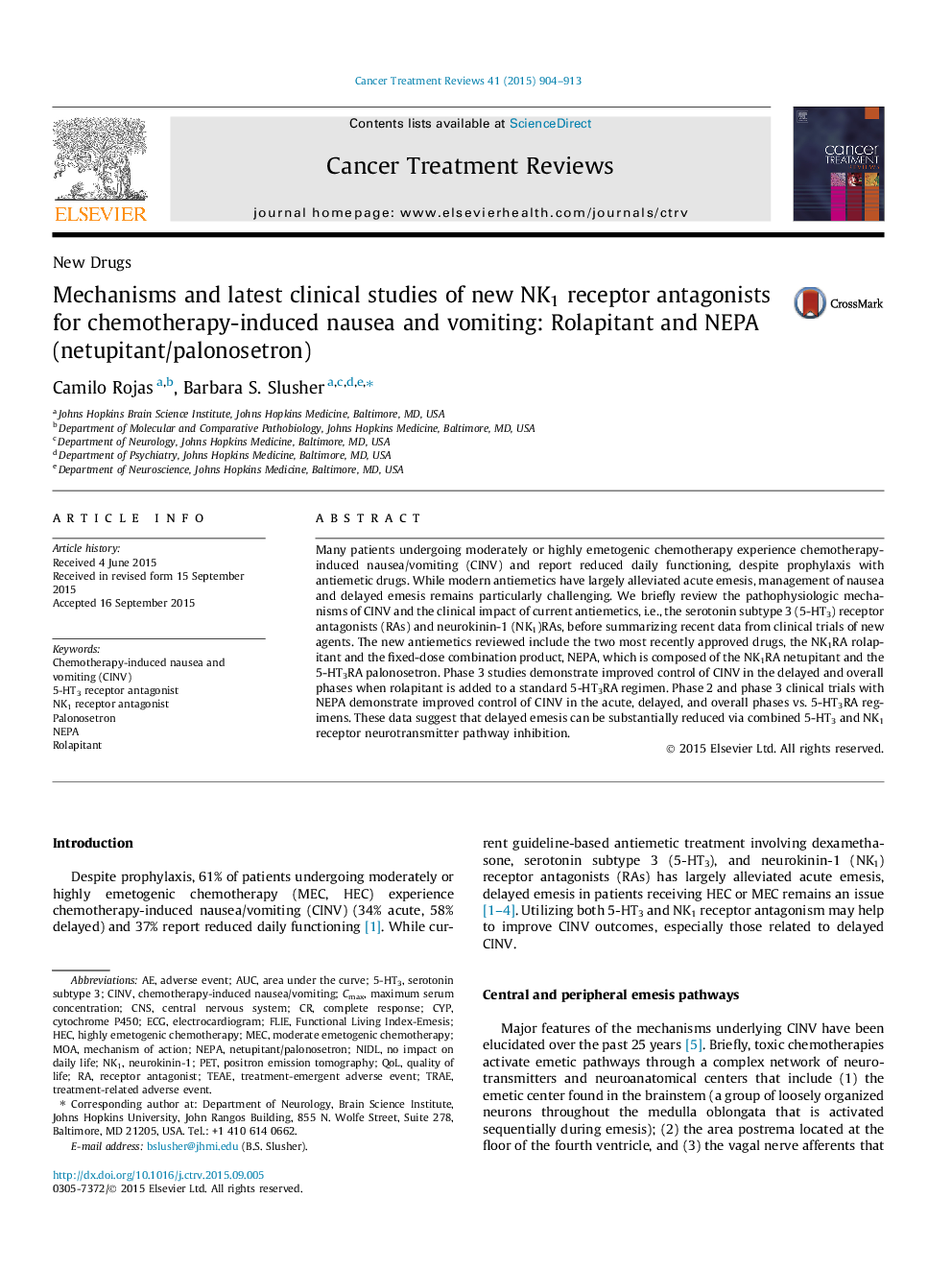| Article ID | Journal | Published Year | Pages | File Type |
|---|---|---|---|---|
| 6190409 | Cancer Treatment Reviews | 2015 | 10 Pages |
â¢Nausea and delayed emesis in patients undergoing chemotherapy remain a challenge.â¢Data show that combined 5-HT3 receptor antagonists (RAs) and NK1RAs can reduce delayed emesis.â¢Combinations of rolapitant + 5-HT3RA and netupitant/palonosetron show good efficacy.
Many patients undergoing moderately or highly emetogenic chemotherapy experience chemotherapy-induced nausea/vomiting (CINV) and report reduced daily functioning, despite prophylaxis with antiemetic drugs. While modern antiemetics have largely alleviated acute emesis, management of nausea and delayed emesis remains particularly challenging. We briefly review the pathophysiologic mechanisms of CINV and the clinical impact of current antiemetics, i.e., the serotonin subtype 3 (5-HT3) receptor antagonists (RAs) and neurokinin-1 (NK1)RAs, before summarizing recent data from clinical trials of new agents. The new antiemetics reviewed include the two most recently approved drugs, the NK1RA rolapitant and the fixed-dose combination product, NEPA, which is composed of the NK1RA netupitant and the 5-HT3RA palonosetron. Phase 3 studies demonstrate improved control of CINV in the delayed and overall phases when rolapitant is added to a standard 5-HT3RA regimen. Phase 2 and phase 3 clinical trials with NEPA demonstrate improved control of CINV in the acute, delayed, and overall phases vs. 5-HT3RA regimens. These data suggest that delayed emesis can be substantially reduced via combined 5-HT3 and NK1 receptor neurotransmitter pathway inhibition.
